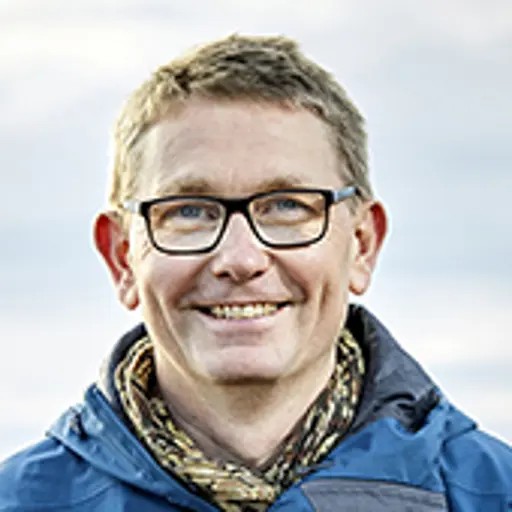
The work of Chalmers Areas of Advance is interdepartmental and for Information and Communication Technology Area of Advance (ICT), this could be supporting research on ICT tools. But what does this actually mean?
We have met Jan Stake, Professor of Terahertz Electronics and Head of Division of Terahertz and Millimetre Wave Technology at the Department of Microtechnology and Nanoscience (MC2), to find out more about his research and how it links to ICT.
Hello Jan! What are you working on?
Right now, I am teaching a course on semiconductor device physics. In addition, I work with my PhD students in research projects that deal with components and circuits for the submillimeter wave range, including for terahertz communication. There is a lot of activity in the cleanroom, but also precision mechanics that are manufactured in the workshop at MC2, as well as analyzing and evaluating measurements.
At the same time, I am preparing and recruiting for a new project that starts on October 1. This project is a result of the ERC Advanced Grant 2023, that I received earlier this year. It involves semiconductor electronics for detecting electromagnetic radiation in the 60 – 150 μm wavelength range.
How is your work linked to ICT?
It is mainly research on components, receivers and transmitters for sensing and for communication applications. My main focus is to solve challenges at the interface between microwave technology and photonics to enable applications in the terahertz range.
ICT is so broad – from hardware to data and information technology. My research is physics-related research and also overlaps with the Nano Area of Advance.
Why is your work important?
Terahertz technology is essential for space research and atmospheric observations, which helps us to understand how the climate changes due to human influence. This is urgent! And to be a part of it feels important and really exciting.
I am driven by working with technology research, which is essential for other scientific needs. To develop new sensitive receivers and technology required for this type of measurement, and thus be a cog in an even larger scientific context.
Much of our work is for weather monitoring and climate research, and is used on satellites that measure the Earth's atmosphere. Both ESA and NASA are planning scientific missions based on sensitive terahertz instruments, but where the technology does not yet exist.
But to feel that what we have researched - the work we have done here in the cleanroom, has contributed to this space project. It feels amazing!
What do you find most exciting?
I find it exciting to work on interdisciplinary projects, to work in the borderland between physics and electronics. And that the wavelength range I work with, terahertz, is multifaceted and exciting. There are many challenges here, and you need to have a good understanding of several areas: from applied physics to electronics, optics, microwave technology.
I am driven by studying a new component or material for electronics, and to take it further along the food chain with the aim that it can actually become something that is relevant and useful later on. A receipt that you have succeeded is when the industry or other organizations get in touch and want to collaborate. But it requires a long-term perspective, which is a major challenge.
It is also very exciting to follow what happens next, such as the launch of ESA's space probe JUICE to Jupiter's moons last spring. It is a journey that takes eight years, and when it arrives, it will spin around between the moons and make measurement campaigns. Our work was completed about eight years earlier, and was then taken over by industry, which integrated our research results into its systems and then integrated into the satellite. It takes time. But to feel that what we have researched - the work we have done here in the cleanroom, has contributed to this space project. It feels amazing!
There are a lot of exciting things you can do in the field of terahertz. From measurements and basic research in the natural sciences to technical applications for communication, for example. However, the terahertz area is still mainly driven by the need for space research, while the subterahertz area is on the rise for communication. In this way, it is an exotic research field that suits me perfectly.
So, in summary, you can say that it is about exciting technology and physics that are essential for gaining new knowledge about the universe and our climate.
What challenges do you see?
We do experimental work that requires special infrastructure, such as a cleanroom, measurement labs and a workshop. It is both expensive and requires staff with the right skills. A major challenge is to ensure that the activities are viable and that there is sufficient research funding. Many different parts need to be in place to be able to do experiments and build the advanced demonstrators, in addition to the simulations and analyses that we do on the computers. All of this needs to click together. PhD students and researchers must complement each other to form a complete unit. But when everything works, we can do unique things that create great interest.
Finally, what do you do when you are not working?
Then I play the trumpet or listen to music! I play in different contexts, which requires a lot of practice that may not always be so appreciated by those around me. Since I live in an apartment, I usually practice in a space under the cleanroom.




